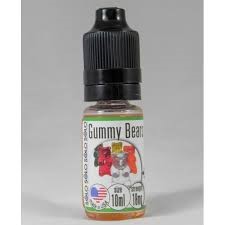
Op-Ed: Unregulated E-Cigs are Creating the Next Generation of Nicotine Addicts
Deborah Hendren, CSAPC – Substance Abuse Prevention Manager
Each year, the third Thursday of November welcomes the Great American Smokeout – a nationwide opportunity for those who want to give up smoking to find mass support. Much has changed since the start of the Great American Smokeout in the early 1970’s. There is a new name and face of addiction to nicotine.
Once thought to be a “safe” alternative to traditional cigarettes, electronic cigarettes (also called e-cigarettes), are appearing to be a risky substitute, based on information that is emerging.
E-cigarettes are battery-powered devices that heat nicotine — along with other chemicals — into a vapor that is inhaled. While e-cigs do not produce smelly smoke or dangerous tar that causes lung cancer, there is still much we do not know about them. What is clear is alarming.
- The FDA has not found any e-cigarette to be safe and effective in helping smokers quit. Some people believe e-cigarette products may help smokers lower their nicotine cravings while they are trying to discontinue their tobacco use. However, it is unclear whether e-cigarettes may be effective as smoking-cessation aids. There is also the possibility that they could perpetuate the nicotine addiction and thus interfere with quitting.Many e-cigarette users are continuing to use e-cigarettes while still using conventional cigarettes. In 2013, 76.8 percent of people who recently used e-cigarettes also currently smoked conventional cigarettes. While e-cigarettes are often promoted as safer alternatives to traditional cigarettes, which deliver nicotine by burning tobacco, little is actually known yet about the health risks of using these devices.
- E-cigarettes are unregulated tobacco products. The Food and Drug Administration (FDA) does not have regulatory powers over e-cigarettes unless the products claim to offer therapeutic benefits, such as for help quitting smoking. The agency’s Center for Tobacco Products only regulates cigarettes, cigarette tobacco, roll-your-own tobacco, and smokeless tobacco.
Nearly 500 brands and 7,700 flavors of e-cigarettes are on the market, and none of them have been evaluated by the FDA. We do not know for sure what’s in them. Studies have found toxic chemicals in e-cigarettes, including an ingredient used in antifreeze and formaldehyde. Because the FDA does not regulate these products, e-cigarettes are not required to display ingredient disclosures on warning labels.
Marketing tactics are also unregulated. E-cigarettes are being promoted using the same tactics cigarette companies have used to addict generations of teenagers, including celebrity endorsements, slick TV and magazine ads that portray e-cigarette use as glamorous or masculine, and the use of sweet flavors such as gummy bear, cotton candy and sweet cereals.
The good news. According to the North Carolina Youth Tobacco Survey, the state’s middle school cigarette smoking rate dropped to 2.5 percent in 2013. During the same period, the high school rate dropped to 13.5 percent. These are the all-time lowest rates ever recorded for each group, according to the NC Department of Health and Human Services (DHHS).
Now for the bad news. For the first time ever, teens are smoking e-cigarettes more than traditional cigarettes, and there has been rapid rate at which teenagers who have no previous history of smoking have embraced the devices. Current use of electronic cigarettes among North Carolina high school students jumped by 352 percent from 1.7 percent in 2011 to 7.7 percent in 2013. In addition to the unknown health effects, early evidence suggests that e-cigarette use may serve as an introductory product for youth who then go on to use other tobacco products, including conventional cigarettes. From a front line observation, I suspect a continued increase in teen e-cigarette initiation and use with the next release of a data set survey.
Despite heavy advertising and lack of safety data, some states are already implementing measures to curb e-cigarette use. In North Carolina, e-cigarettes cannot be sold to anyone under age 18. North Carolina also taxes the sale of e-cigarettes and bans their use on school property and in 100 percent smoke-free sites.
Basic FDA oversight, including stronger youth access restrictions and advertising limitations, is needed to protect kids from becoming the next generation hooked on nicotine.
Leaving these issues unaddressed is a big mistake. The cigarette industry has long understood that virtually all new tobacco users in the United States are children and that if it doesn’t hook them as kids, it probably never will. We can’t let the e-cigarette industry do the same. As a nation, we have worked so hard to deglamorize cigarette smoking. And it worked. But the aggressive marketing of e-cigarettes to teenagers threatens to undermine these gains and make smoking cool again. We cannot afford to waste more time while the tobacco industry addicts another generation of kids.
Sources:
- U.S. Food and Drug Administration – Electronic Cigarettes
- American Cancer Society. The Great American Smokeout.
- American Lung Association – E-cigarettes and Lung Health
- NC Health and Human Services. Youth Tobacco Survey Shows Less Smoking, More E-cigarette Use Among NC Teens
- Medical News Today. The Great American Smokeout: a great day to quit smoking
- The New York Times. It’s Time To Regulate E-Cigarettes.
EDUCATORS’ ACTIVITY: The Cost of Smoking


